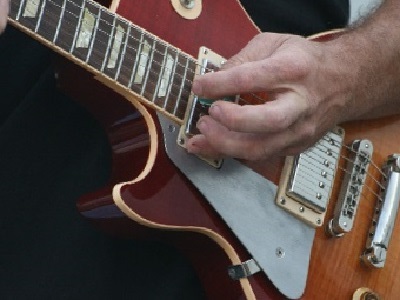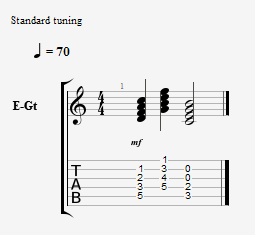Introduction to the 2-5-1 Jazz Chord Progression
 Jazz is one of, if not the most complex music styles. That being said, even the most complex of music styles has a starting point. The most common starting point in jazz, the one I myself first learned, is the 2-5-1 chord progression.
Jazz is one of, if not the most complex music styles. That being said, even the most complex of music styles has a starting point. The most common starting point in jazz, the one I myself first learned, is the 2-5-1 chord progression.
Today we will learn the 2-5-1 chord progression using the key of C Major. The best reason to start with C Major is that it involves no flats or sharps, making the building of seventh chords fairly easy for beginners.
In the key of C Major the 2-5-1 progression starts out on a minor chord and ends with two subsequent major chords. This gives the progression a great resolution, which is in turn pleasing to the ear of the listener.
When you write out your 2-5-1 progression, it will look like this:
ii – V – I
The lower Roman numeral two represents the second scale degree of the C Major scale which is D. In almost every major key the second scale degree, or the supertonic, is a minor. In every major key the first Roman numeral, or the tonic, is a major, which in this case is the note C. Finally, the fifth scale degree, or the dominant, is almost always major in a major key, and in this case is the note G.
Now that we know our properties, we need to construct our seventh chords. Minor seventh chords are built of a Major seventh, which means the distance from the root to the last note is ten-half steps. Basic minor chords such as the one we will be using for this lesson are built of a minor third (three half steps), a major third (four half steps), and a second minor third.
Building the 7th Chord
Using this information, let’s build our first seventh chord. We know that the second letter name in C Major is D, so our outcome should follow the steps demonstrated below.
First minor third: D#, E, F.
Major third: F#, G, G#, A.
Second minor third: A#, B, C.
This leaves us with the notes D, F, A and C for our second scale degree seventh chord. Next, let’s build our fifth scale degree (dominant) seventh chord. This time it’s a major seventh chord, and we know that the fifth scale degree of C Major is G.
First Major third: G#, A, A#, B.
Minor third: C, C#, D.
Second Major third: D#, E, F, F#.
Now notice how we end on F#. Because this is C Major, a key with no accidentals, we turn F# into F natural, voiding the accidental. We are left with the notes G, B, D, and F for our dominant seventh chord. Finally, our last seventh chord is our C Major tonic seventh chord.
First Major third: C#, D, D#, E.
Minor third: F, F#, G
Second Major third: G#, A, A#, B.
This leaves us with the notes C, E, G and B for our tonic seventh chord.
Building 7th Notes On Your Guitar
Now that we have our seventh chords built, we can build them on our guitars. There are a few different octaves in which they can be played, but the simplest way to play our newly created ii-V-I progression is in our example below.

Download the .gtp file for the lesson ( Right click and Save As… )
If you do not have GuitarPro yet, download a copy of Guitar Pro instantly here…
Once you can play these chords, try adding the jazz chord progression into your own music. You will be surprised at how many guitarists you’ll be able to jam with!
Looking For Step-By-Step Video Guitar Lessons?
Trusted by 200,000+ students, Jamorama is the leading provider of guitar courses. If you are looking for a fun way to learn the guitar and want to play-along to your favorite songs, check out Jamorama today…







Leave A Comment